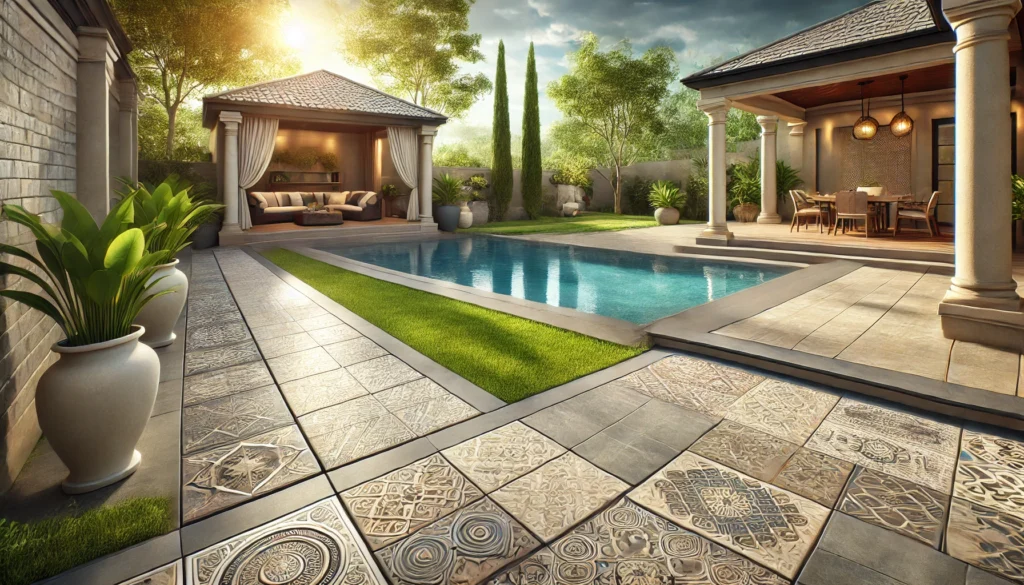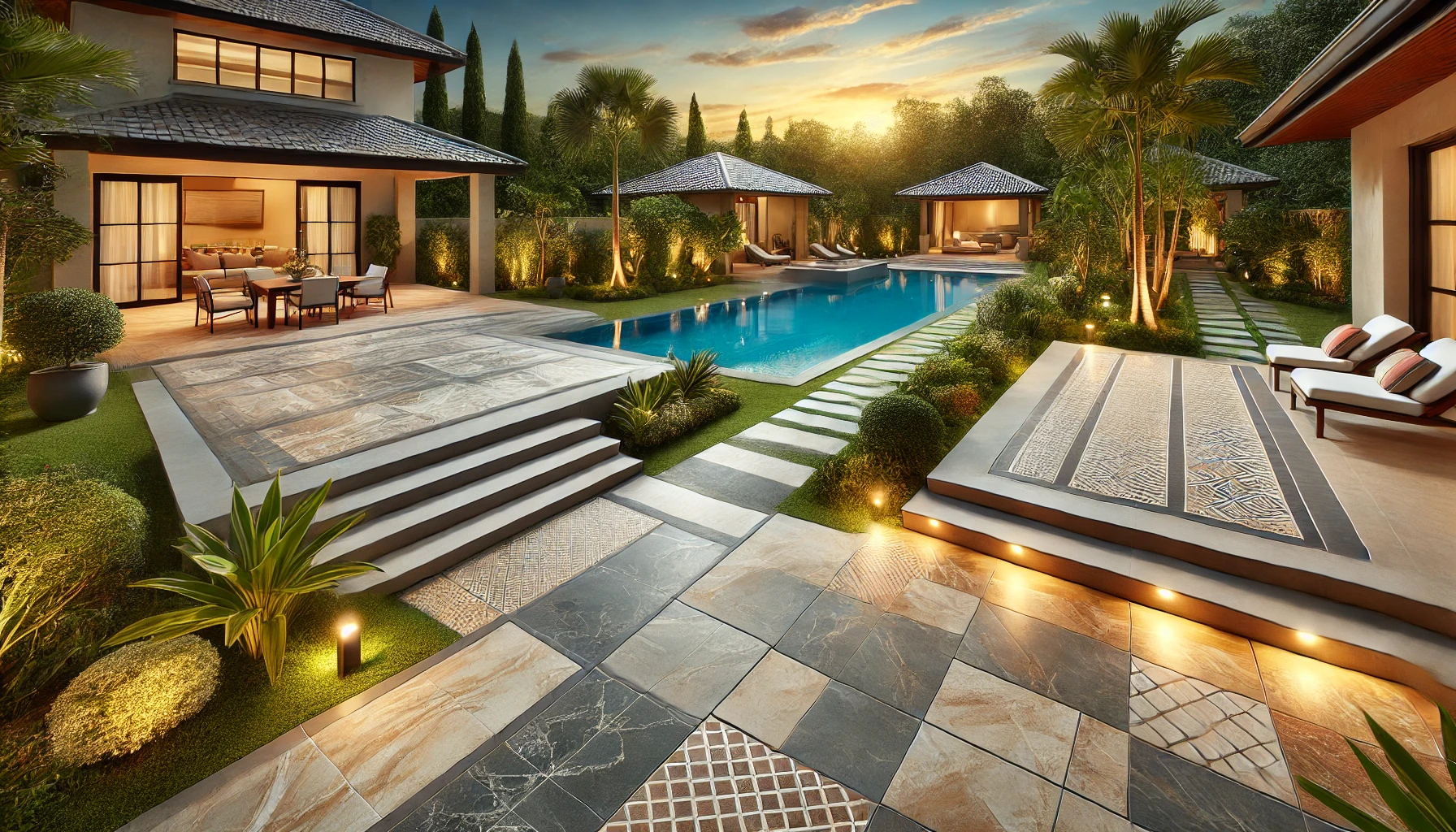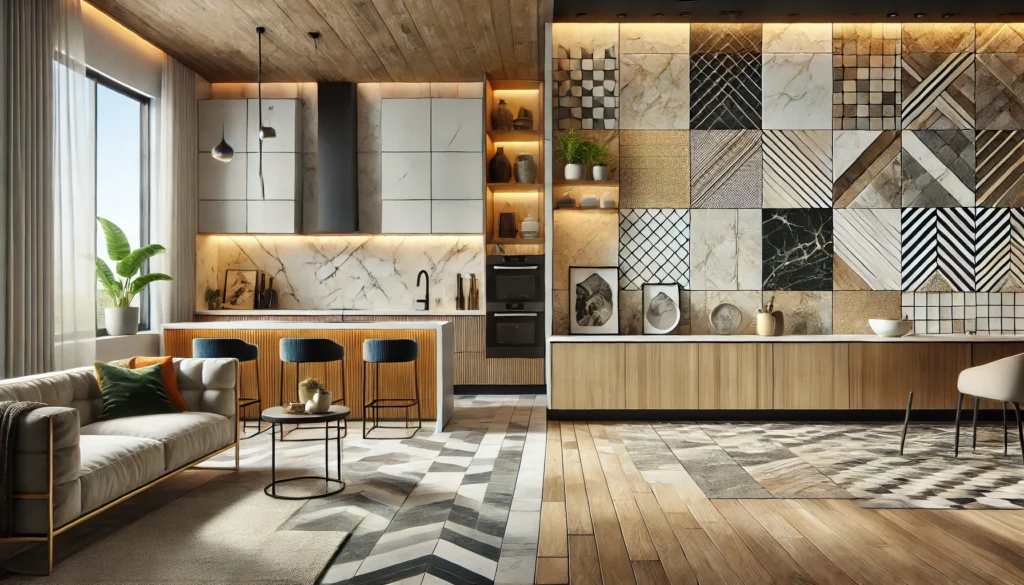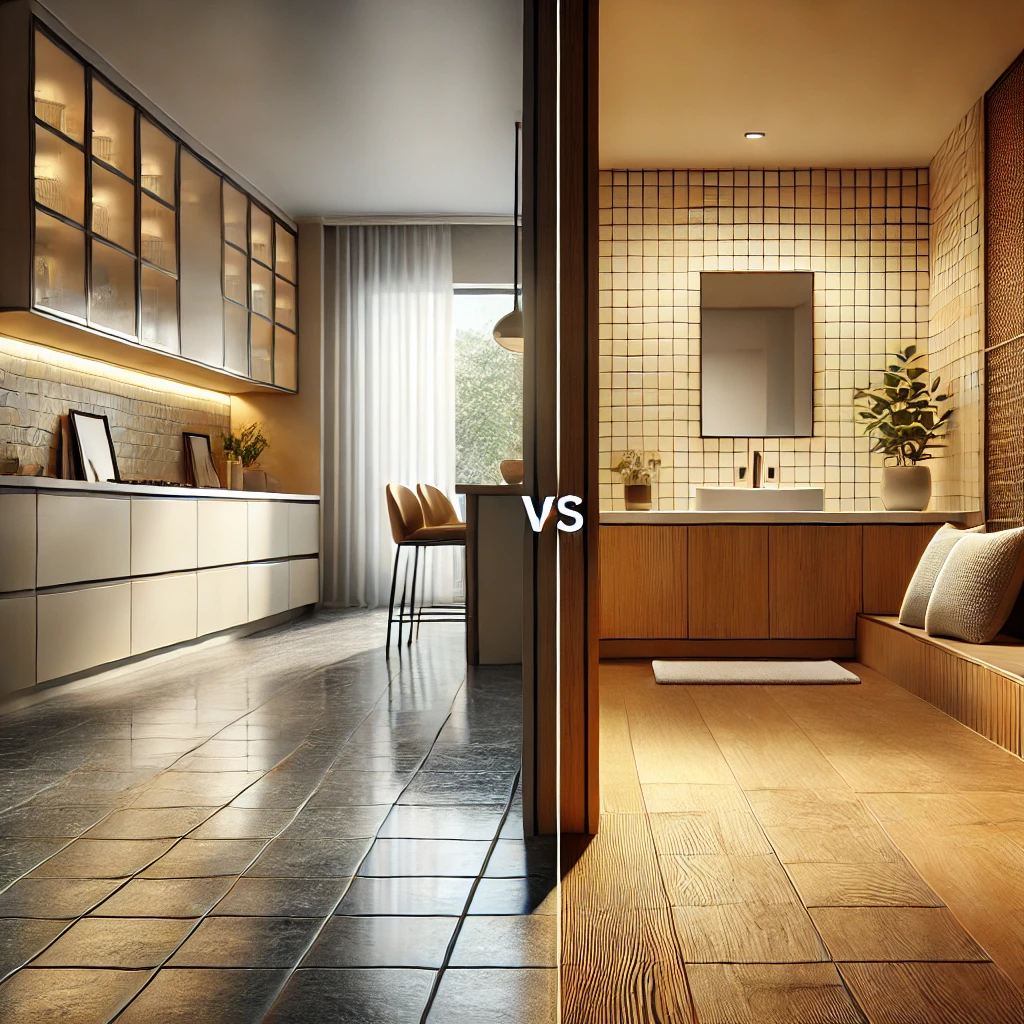Imagine stepping outside to a patio that feels like an extension of your living room, a pool deck that’s as safe as it is stunning, or a garden path that turns heads. What’s the secret? It’s all about choosing the right outdoor tile ideas. Tiles aren’t just for kitchens and bathrooms anymore—they’re transforming outdoor spaces into durable, stylish havens. Whether you’re dreaming of a sleek poolside retreat or a cozy patio for summer barbecues, the right tiles can make it happen.
In this guide, I’ll walk you through everything you need to know about durable outdoor tiles—from battling the elements to picking options that match your vibe. We’ll explore practical solutions, real-world examples, and advanced tips to ensure your project shines. Ready to elevate your outdoor living game? Let’s get started.
Introduction: Why Outdoor Tiles Are a Game-Changer for Your Space
Outdoor living is having a moment. According to a 2023 survey by the National Association of Home Builders, 82% of homeowners now prioritize functional outdoor spaces. Patios, pool decks, and gardens aren’t just add-ons—they’re essentials. But here’s the catch: these areas need flooring that can handle Mother Nature’s mood swings while still looking good.
That’s where outdoor tile ideas come in. They’re tough, versatile, and oh-so-pretty. Whether you’re sipping coffee on a patio or cannonballing into the pool, the right tiles set the stage. So, what makes them so special? Let’s break it down.
The Appeal of Outdoor Living Spaces
Why are we obsessed with outdoor spaces? It’s simple—they’re our escape. A patio becomes a dining room under the stars. A pool deck turns into a summer hangout. A garden path invites you to slow down and breathe. Tiles tie it all together, offering a foundation that’s both practical and personal. They’re like the unsung heroes of your backyard, quietly making everything better.
What Makes Outdoor Tiles Special?
Outdoor tiles aren’t your average indoor ceramic. They’re engineered to withstand rain, UV rays, and freezing temps without cracking or fading. Plus, they come in endless styles—think rustic stone, sleek porcelain, or even wood-look vibes. They’re the perfect mix of durability and design, solving the age-old dilemma of form versus function. Curious about your options? Let’s dive into the challenges first, so you know exactly what to look for.

The Problem: Choosing Tiles That Last Outdoors
Picking the perfect outdoor tile ideas isn’t as simple as grabbing the prettiest option off the shelf. Outdoor spaces throw curveballs—weather, wear, and safety concerns—that indoor floors never face. Let’s unpack the big hurdles you’ll need to clear.
Weather Woes: Rain, Sun, and Frost
Your patio doesn’t get a break. Rain soaks it. Sun bakes it. Winter frost tries to crack it. Standard tiles might buckle under the pressure, leaving you with a chipped, faded mess. Ever seen a tile pop loose after a freeze-thaw cycle? It’s not pretty. You need materials that laugh in the face of the elements.
Safety Concerns: Slippery When Wet?
Pool decks and patios can turn into skating rinks without the right grip. A smooth, glossy tile might look chic, but one splash of water and you’re risking a tumble. Have you ever slipped on a wet surface? It’s a wake-up call. Traction is non-negotiable, especially around water or in rainy climates.
Durability vs. Style: Do You Have to Compromise?
Here’s the million-dollar question: Can you get tiles that last and look amazing? Too often, durable options feel industrial—think gray slabs with zero personality. Meanwhile, stylish picks might flake after a season. You shouldn’t have to choose between a patio that survives and one you love showing off. The good news? You don’t.
Solutions: Top Durable Outdoor Tile Ideas
Now that we’ve faced the problems, let’s talk solutions. These outdoor tile ideas are built to last, easy on the eyes, and perfect for patios, pool decks, and gardens. I’ve rounded up the best options, with pros, cons, and insider tips to help you decide.
Porcelain Tiles: The All-Weather Champion
Porcelain is the MVP of durable outdoor tiles. Why? It’s dense, non-porous, and resists water like a champ. Plus, it comes in every style imaginable—stone-look, wood-look, you name it.
Why Porcelain Wins for Patios
Patios need tiles that can take a beating. Porcelain’s low water absorption (less than 0.5%) means it won’t crack in the rain or frost. Picture this: a sleek gray porcelain patio, paired with a fire pit and string lights. It’s tough enough for muddy boots but classy enough for dinner parties. Bonus: it’s stain-resistant, so that spilled merlot? No big deal.
Pool Deck Perfection with Porcelain
Around the pool, slip resistance is king. Textured porcelain tiles—like those with a matte or grip finish—keep you steady even when wet. Brands like Daltile report a 35% increase in demand for slip-resistant porcelain in 2024. Go for larger formats (like 24×24 inches) to minimize grout lines and maximize that seamless, modern look.
Natural Stone Tiles: Timeless Beauty, Tough as Nails
Want a touch of nature? Natural stone tiles—think slate, travertine, or granite—are as durable as they are gorgeous. They’ve been around for centuries, literally carved from the earth to stand the test of time.
Slate for Rustic Gardens
Slate’s rugged texture and earthy tones make it a garden flooring favorite. Its natural cleft surface gives you grip, while colors like charcoal or rust add drama to winding paths. Worried about maintenance? A quick sealant every couple of years keeps it looking fresh. It’s like giving your garden a backbone.
Travertine for Elegant Pool Decks
Travertine’s cool-to-the-touch surface is a poolside dream—no burned feet here. Its subtle veining and creamy hues scream sophistication, and it’s naturally slip-resistant when honed. A 2022 Houzz study found 67% of pool owners prefer travertine for its luxe vibe and durability. Pair it with a minimalist deck chair setup, and you’ve got a resort in your backyard.
Concrete Tiles: Budget-Friendly and Bold
Don’t sleep on concrete tiles. They’re affordable, customizable, and tougher than they look. Modern finishes like stamping or staining turn them into design stars.
Stamped Concrete for Patios
Stamped concrete mimics pricier materials like stone or brick at half the cost. A 12×12-foot patio might run you $1,200 with concrete versus $2,500 with natural stone. Want a cobblestone look? Done. It’s poured onsite, so you skip the grout hassle—just seal it every few years to keep it strong.
Wood-Look Tiles: Warmth Without the Maintenance
Love wood’s cozy feel but hate the upkeep? Wood-look tiles (usually porcelain or ceramic) give you that hardwood charm without the warping or splintering. They’re perfect for patios or garden decks, blending indoor comfort with outdoor grit.
Real-World Examples: Outdoor Tile Ideas in Action
Theory’s great, but let’s see these outdoor tile ideas in the wild. Here are three projects that nailed it—proof you can balance durability and wow-factor.
Case Study: A Coastal Patio Transformation
Meet Sarah, a San Diego homeowner who wanted a patio to match her beachy vibe. She chose 18×18-inch porcelain tiles in a sandy beige finish. The result? A space that shrugs off salty air and rainy seasons while hosting sunset cocktails. Total cost: $3,800, with a lifespan of 20+ years. Her tip? “Go for light colors—they hide wear better.”
Pool Deck Success: Slip-Resistant Style
John’s Florida pool deck was a slick disaster until he swapped it for textured travertine. The 12×24-inch tiles cut slips by 80%, per his estimate, and the soft taupe shade keeps it cool under the sun. Install took a weekend, and he’s had zero cracks after two years. “It’s like walking on luxury,” he says.
Garden Pathways That Wow
Lisa’s Oregon garden went from muddy to magical with slate tiles. She laid 16×16-inch pieces in a winding path, sealed them against rain, and added moss between for a fairy-tale effect. Cost: $900. Time: One long Saturday. Now, it’s her favorite spot for morning coffee.
Advanced Tips: Maximizing Your Outdoor Tile Investment
You’ve got your durable outdoor tiles—now what? These pro tips will keep them shining for decades.
Installation Hacks for Longevity
- Drainage is key: Slope your surface 1/4 inch per foot to avoid pooling water.
- Use the right adhesive: Outdoor-rated thin-set mortar prevents tiles from popping.
- Expansion joints: Add them every 8-12 feet to handle temperature shifts.
Maintenance Made Easy
- Sweep weekly to dodge dirt buildup.
- Hose down with mild soap monthly—no harsh chemicals needed.
- Reseal natural stone every 1-2 years; porcelain rarely needs it.
Pairing Tiles with Outdoor Features
- Patios: Match tiles to furniture—gray porcelain with sleek metal chairs, say.
- Pool Decks: Contrast light tiles with dark coping for a bold edge.
- Gardens: Use tile borders to frame flower beds or gravel zones.
Conclusion: Your Perfect Outdoor Tile Awaits
Recap: Durable Options for Every Space
From porcelain tiles that defy the weather to natural stone that oozes charm, your outdoor space has endless possibilities. Concrete keeps it affordable, while wood-look tiles bring warmth without the headache. Whether it’s a patio, pool deck, or garden, there’s a durable option waiting to transform it.
Call to Action: Start Your Project Today
Why wait? Grab a notepad, sketch your dream layout, and hit up your local tile supplier. Need inspiration? Check out brands like MSI or Daltile online—they ship samples fast. Your outdoor oasis is closer than you think—make it happen!
FAQs: Your Outdoor Tile Questions Answered
- What’s the most durable outdoor tile?
Porcelain tops the list with its low absorption and crack resistance, but natural stone like granite is a close second for heavy traffic. - Are outdoor tiles slippery when wet?
Not if you choose wisely—look for textured finishes or high slip ratings (R11 or above). - How much do outdoor tiles cost?
Expect $2-$15 per square foot. Concrete’s cheapest; premium stone’s pricier but worth it. - Can I install outdoor tiles myself?
Yes, with patience and tools like a wet saw. Pros handle tricky slopes better, though.
How long do outdoor tiles last?
With proper care, 20-50 years. Porcelain and stone often outlast concrete.



